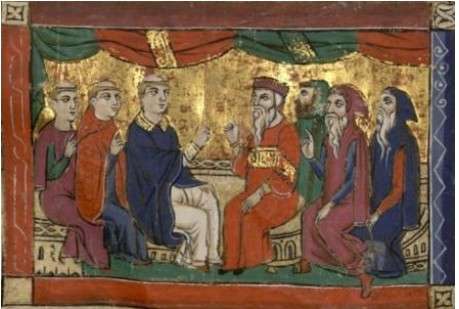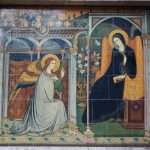I’m often asked, “Is this the greatest crisis the Church has ever faced?” My answer is, “No, but it could develop that way. We’ll have to see.” I’ll explain below.
The Arian Heresy
I recently read St. John Henry Newman’s historical study of the Arian heresy in the Fourth Century and was startled by what I learned.1 It was bad, very bad, worse than anything we have yet seen. Newman’s study is based on a huge array of original sources, letters from the main protagonists, documents from various synods and councils, historical accounts from contemporary historians, and more.
What was the Arian crisis? It was a recurring effort to understand Jesus as someone who did not share the same nature as the Father and was not truly God. There were numerous forms of Arianism, ranging from seeing Jesus as an ordinary creature in an extraordinary relationship with God, to someone who existed before the formation of the world and was virtually a god—but who nevertheless was created.
What particularly struck me was how persistent the Arian heresy was despite the Council of Nicaea in 325 definitively condemning it and reaffirming the apostolic understanding of Jesus being truly God and truly man, of the same substance as the Father and eternally existing with Him. It wasn’t until the Council of Constantinople in 381—fifty-six years later!—that Arians were definitely expelled from the Church and formed their own sect.
Arianism was a story of profound disunity and disagreement among major Church leaders that continued for decades. It’s a story of competing synods, councils, excommunications, and ongoing instability. Not just Arianism but other heretical understandings of God won over many bishops and dioceses. Newman, quoting the defender of orthodoxy St. Athanasius, said “the Son of God was scarcely preached in the Churches.”
Newman described the very important patriarchal see of Antioch, where Peter was the first bishop, in this way: “This ancient and celebrated Church, however, is painfully conspicuous in the middle of the century, as affording so open a manifestation of the spirit of Antichrist, as to fulfill almost literally the prophecy of the Apostle in Second Thessalonians 2.”
Other noteworthy observations from Newman
1. Secular powers attempted to bend the Church to its own aims, and some Church leaders allied themselves with secular authorities to persecute orthodox believers. Constantine and his successors hugely influenced the Church and saw its unity as critical to the empire. When Constantine or his successors were sympathetic to the Arians—sometimes out of a desire to bolster political unity, and sometimes out of genuine Arian conviction—life was difficult for faithful believers. Orthodox bishops were expelled from their sees and Arian bishops were appointed who proceeded to fill as many offices as possible with clergy who supported them.
Constantine even ordered the orthodox bishop of Constantinople to readmit Arius into the communion of the Church or be removed as bishop. Something amazing happened to forestall this: “On the evening before the day of his proposed triumph, Arius passed through the streets of the city with his party, in an ostentatious manner; when the stroke of death suddenly seized him, and he expired.”
Nevertheless, the heresy lived on. One of Constantinople’s patriarchs was an Arian. And under the reign of Constantine’s son, all the major sees of the East were in the hands of the Arians.
2. Many bishops lacked conviction and confidence in the truth of the faith and were easily swayed into going where the winds of ecclesiastical and secular power were blowing. Newman speaks about how the pastoral passivity, “misplaced meekness,” and “indecision” of bishops allowed the heresy to spread, disheartening the faithful.
3. It seems like simply a battle over words, but these words shape the Church’s understanding of Jesus. The Arians used linguistic sophistication and trickery to give a false impression of being orthodox. One bold tactic was to claim that they only wanted a creed using scriptural language—even though their own interpretation of such language was heretical. Newman comments that the Arians put forward a creed that seemed to confer the highest dignity on Christ—“Son of God, Logos of God, God of God, Light of Light, Life of Life, the only-begotten Son, the First-born of the whole creation, made of the Father before all worlds, and the Instrument of creating them, etc.,” which nevertheless refused to acknowledge Jesus as of the same substance as the Father. The basic difference between the Arians and the Catholics could only be seen by the very astute. For Arians, Christ is a creature; for Catholics, He is truly God.
4. For the first time in Church history, the Arians resorted to opposing Catholics with persecution that was sometimes brutal and included banishment, unjust slander and calumny, degrading humiliation, torture, and death. Particularly shocking was the decision of the Emperor Constantius, at the urging of the Arians, to attempt to get Hosius—who presided over the Council of Nicea and was perhaps the best known other than Athanasius for being a defender of the faith—to adopt the heresy. At 101 years of age, Hosius was thrown into prison and remained there for a year, being tortured on the rack. He resisted and did not sign the condemnation of Athanasius but eventually agreed to sign a statement of faith that could be interpreted in an Arian manner. However, after his release, he lived two more years, professing the orthodox faith until the end.
5. The lay faithful had an instinct for the truth and tended to resist Arian bishops and cheer the heroes of the resistance to heresy, like St. Athanasius.
6. While the number of true Arians and their leaders were probably always a minority, they managed by skillful maneuvering to control large parts of the Church, including some of the most important sees. Their members included many prominent and widely respected Church leaders who were excellent theologians on many points except this central one. They tended to have a general eclectic attitude that looked at doctrinal matters as secondary to a unity not based on essential truths. They also adopted a permissive approach to pagan philosophies and religious systems. Their influence reached major institutions of the culture. Newman notes, “The schools of Medicine were at that time infected with Arianism.”
7. As I stated before, innocent, faithful people suffered. At the Council of Milan in 355, with about three-hundred Western bishops and the Emperor Constantius present, an Arian creed was put forward that overwhelmingly condemned St. Athanasius. It is unclear if the creed was ever officially approved, but only one or two bishops refused to sign it.
Newman states: “But herein is the strength of audacious men; who gain what is unjust, by asking what is extravagant.” Newman endorses the view of an attendee who attributed this shocking outcome to “fear, surprise, and ignorance.” Lacking leadership and experience, a small group manipulated the entire Council.
Newman adds:
“The simplicity of honesty, the weakness of an amiable temper, the inexperience of a secluded, and the dullness of a rustic life, all combined with the dread of the Emperor’s displeasure, which had been openly manifested on their hesitation. When some of them ventured to object the rule of the Church against his command, that they should condemn Athanasius, and communicate with the Arians, he replied: ‘My will must be its rule, so the Syrian Bishops have decided; and so must yourselves if you would escape exile.’ Only a few were willing to take the consequences of resisting the Emperor and went into exile.”
For a time, it looked like the entire Church—East and West—had signed on to being Arian!
In later centuries, fear and cowardice continued to be the undoing of the Church. Only a few English bishops resisted Henry VIII’s demand that they pay allegiance to him rather than the pope. And many French bishops and priests pledged primary loyalty to the profound rebellion of the French Revolution.
8. The popes were often naive and weak—not understanding nuances in the Greek formulas proposed to replace Nicea—but eventually came through on the side of the angels.
Conclusions
No, we are clearly not yet anywhere near the wretched state of the Church during the Arian heresy. But one thing could quickly change our situation. If Rome, without explicitly denying the faith regarding marriage and sexuality, succeeds in undermining it and establishing a pastoral practice that in fact denies it, we will be in a very dangerous situation. The appointment of the new head of the dicastery for the Doctrine of the Faith, along with many other appointments, has opened this door rather wide. (See my video about this here.) We trust Jesus’ words in Scripture, “And I tell you, you are Peter, and on this rock I will build my church, and the powers of death shall not prevail against it” (Mt 16:18). Nevertheless, let’s pray for our holy Church in this hour of need and be grateful for all the orthodox and healthy things still present in the worldwide Church.
Endnote
- Newman, John Henry. The Arians of the Fourth Century. CrossReach Publications, 2019.
This article originally appeared in Renewal Ministries’ October 2023 newsletter.








Thank you very much for your work and efforts through your YouTube videos to explain what’s going on. We pray that the Holy Spirit will guide Pope Francis to stay on the right path. The leaders of the church need to realize the great punishment that Holy Scripture says will come upon those who misguide the faithful through errant teachings.